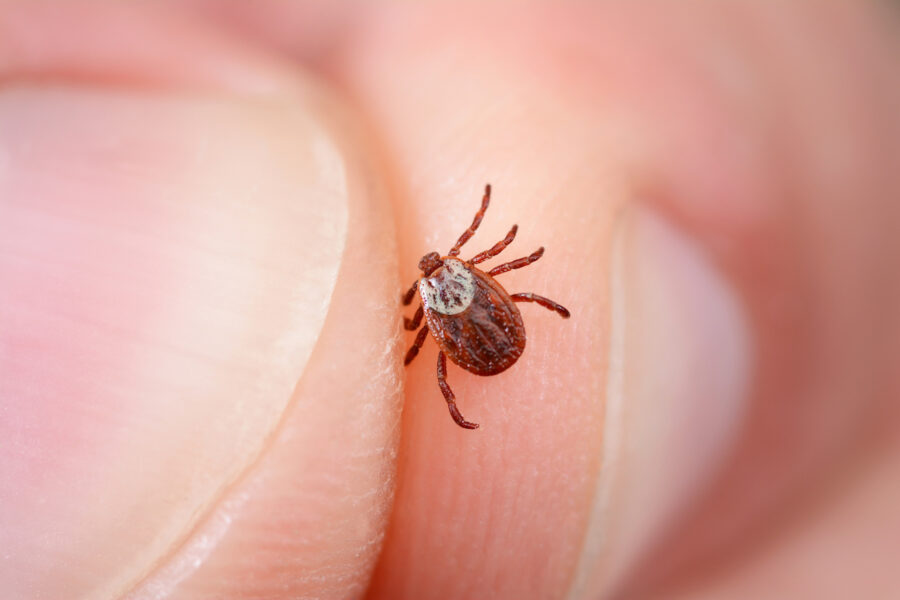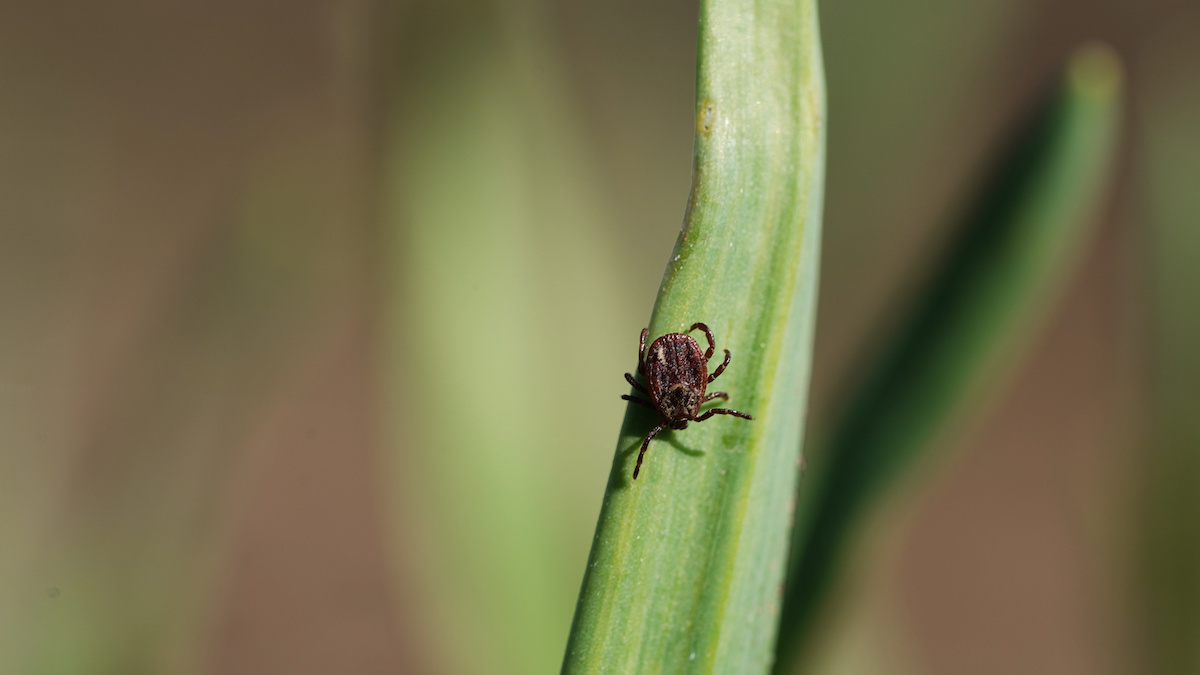
Ticks are not only a nuisance but also a serious health hazard. These small, blood-sucking parasites can transmit various diseases to humans and pets, including Lyme disease, Rocky Mountain spotted fever, and ehrlichiosis. With tick populations on the rise, particularly in areas like Virginia, it’s crucial to take proactive tick prevention measures from invading your home and yard.
At James River Pest Solutions, we understand the importance of maintaining a tick-free environment. This comprehensive guide will provide you with essential tips and strategies to create a tick-free zone around your home, ensuring the safety and well-being of your family and pets.
1. Understanding Tick Behavior and Habitats
Before diving into prevention strategies, it’s important to understand the behavior and habitats of ticks. Ticks thrive in warm, humid environments and are in areas with dense vegetation, such as wooded areas, tall grasses, and shrubs. They are most active during the warmer months, typically from spring through fall.
Common Tick Species in Virginia
Virginia is home to several tick species, each with its own preferred habitats and behavior:
- Blacklegged Tick: Also known as the deer tick, this species is a primary carrier of Lyme disease. They are found in wooded and grassy areas.
- American Dog Tick: This tick is known for transmitting Rocky Mountain spotted fever and is often found in grassy fields and along trails.
- Lone Star Tick: Recognizable by the white spot on its back, the lone star tick can transmit ehrlichiosis and is commonly found in wooded areas and tall grasses.
Knowing where ticks are found can help you target your prevention efforts.

2. Landscaping Strategies to Prevent Ticks
Your yard is the first line of defense in creating a tick-free zone. So, implementing smart landscaping practices can significantly reduce the likelihood of ticks making their way into your home.
Maintain a Well-Groomed Lawn
Ticks thrive in tall grass and overgrown vegetation. Keeping your lawn well-manicured is one of the most effective ways to reduce tick populations:
- Regular Mowing: Keep your grass trimmed to a height of three inches or less because this reduces the humidity levels that ticks need to survive.
- Remove Leaf Litter: Ticks often hide in leaf piles and other debris so regularly raking and removing leaf litter will help reduce tick habitats.
- Clear Brush and Weeds: Trim back any overgrown brush and weeds along the edges of your yard because it eliminates potential hiding spots for ticks.
Create a Tick Barrier
Creating a barrier between your lawn and tick-prone areas can further reduce the chances of ticks entering your yard:
- Mulch Barrier: Place a three-foot-wide barrier of wood chips or gravel between your lawn and wooded areas or other tick-prone zones. This dry, hot barrier is inhospitable to ticks and helps keep them out of your yard.
- Fencing: If your yard borders a wooded area or field, then consider installing a fence to keep deer and other tick-carrying wildlife out.
Reduce Wildlife Attractants
Wildlife such as deer, rodents, and birds can carry ticks into your yard. Reducing the presence of these animals can help lower tick populations:
- Remove Food Sources: Avoid feeding wildlife, and keep pet food and birdseed stored in secure containers because it discourages animals from entering your yard.
- Install Deer-Resistant Plants: Planting deer-resistant plants like lavender, rosemary, and marigolds can help deter deer from your property.
- Eliminate Rodent Habitats: Clear away any clutter, such as woodpiles and brush, that could provide shelter for rodents.
3. Pet Care and Tick Prevention
Pets, especially dogs and cats, are run into ticks outdoors. Protecting your pets from ticks is essential for their health and for preventing ticks from being brought into your home.
Regular Tick Checks
After your pets spend time outdoors, especially in wooded or grassy areas, perform a thorough tick check:
- Inspect Fur and Skin: Carefully check your pet’s fur and skin for ticks, paying close attention to areas like the ears, neck, and between the toes.
- Remove Ticks Promptly: If you find a tick, use fine-tipped tweezers to grasp it as close to the skin as possible and pull it out slowly and steadily. Be sure to clean the bite area with antiseptic afterward.
Use Tick Preventatives
There are various tick preventatives available for pets, including topical treatments, oral medications, and collars:
- Topical Treatments: These go on the skin and can kill and repel ticks for several weeks. So, be sure to follow the manufacturer’s instructions for application.
- Oral Medications: Oral tick preventatives are given as a pill and work by killing ticks that bite your pet. These medications are typically effective for one month.
- Tick Collars: Tick collars release chemicals that repel ticks and can provide protection for several months.
Maintain a Tick-Free Yard
In addition to the landscaping strategies mentioned earlier, there are specific steps you can take to keep your yard safe for pets:
- Create a Pet Play Area: Designate a tick-safe play area for your pets by using mulch or gravel to create a barrier around their play space. This will help keep them away from tick-prone areas.
- Use Tick Repellents: Consider using pet-safe tick repellents in your yard, such as sprays or granules, to reduce tick populations in areas where your pets frequent.
4. Home Maintenance and Tick Prevention
Ticks can easily hitch a ride into your home on pets, clothing, or other objects. Taking steps to keep ticks out of your home is essential for maintaining a tick-free environment.
Seal Entry Points
Ticks can enter your home through small gaps and cracks:
- Inspect and Repair: Regularly inspect your home’s exterior for gaps around windows, doors, and foundations. Seal any cracks or openings with caulk or weatherstripping.
- Install Screens: Ensure that all windows and doors are equipped with tight-fitting screens to keep ticks and other pests out.
Keep Indoor Areas Clean
Maintaining a clean home can help reduce the chances of ticks taking up residence:
- Vacuum Regularly: Vacuum carpets, rugs, and furniture to remove ticks that may be inside.
- Wash Pet Bedding: Wash your pet’s bedding frequently in hot water to kill any ticks or tick eggs that may be present.
- Launder Outdoor Clothing: After spending time outdoors, promptly wash and dry your clothing on high heat to eliminate any ticks.
Use Tick Control Products
In addition to maintaining a clean home, consider using tick control products:
- Indoor Sprays: There are tick sprays available for indoor use that can help eliminate ticks in your home. However, be sure to choose products that are safe for use around pets and children.
- Tick Traps: Tick traps go near doorways and windows. These traps can help capture and kill ticks before they have a chance to spread.
5. Professional Tick Control Services
While DIY methods can be effective, professional tick control services offer a more comprehensive approach to tick prevention.
At James River Pest Solutions, we provide expert tick control services to help protect your home and yard from these dangerous pests.
Benefits of Professional Tick Control
Professional tick control services offer several advantages:
- Thorough Inspections: Our team will conduct a thorough inspection of your property to identify tick habitats and areas of concern.
- Targeted Treatments: We use targeted treatments to eliminate ticks at all stages of their life cycle, which then reduces the risk of future infestations.
- Ongoing Monitoring: We provide ongoing monitoring and maintenance to ensure that your property remains tick-free throughout the year.
Customized Tick Control Plans
Every property is unique, which is why we offer customized tick control plans tailored to your specific needs:
- Integrated Pest Management (IPM): Our IPM approach combines multiple strategies, such as habitat modification, biological control, and targeted pesticide use, to effectively manage tick populations.
- Seasonal Treatments: We offer seasonal treatments to coincide with peak tick activity, providing maximum protection during the months when ticks are most active.
Peace of Mind
By choosing professional tick control services from James River Pest Solutions, you can enjoy peace of mind knowing that your home and yard are protected from ticks. Our experienced technicians use safe and effective methods to keep your family and pets safe from tick-borne diseases.
6. Educating Your Family and Guests
Creating a tick-free zone isn’t just about landscaping and pest control—it’s also about educating your family and guests on how to stay safe from ticks.
Tick Awareness
Make sure everyone in your household is aware of the risks associated with ticks and the importance of prevention:
- Educate on Tick Habitats: Teach your family and guests about the areas where ticks are commonly found, such as wooded areas, tall grass, and leaf litter.
- Demonstrate Proper Tick Removal: Ensure that everyone knows how to properly remove a tick if they find one on themselves or a pet.
Encourage Preventative Measures
Encourage your family and guests to take preventive measures when spending time outdoors:
- Wear Protective Clothing: When spending time in tick-prone areas, wear long sleeves, long pants, and socks to reduce skin exposure.
- Use Tick Repellents: Apply tick repellents to clothing and exposed skin to help keep ticks at bay.
- Perform Tick Checks: After spending time outdoors, perform tick checks on yourself, your family members, and pets.

7. Additional Tips for Tick Prevention
To further reduce the risk of ticks, consider these additional tips:
- Install Outdoor Lighting
- Ticks are less active in well-lit areas, so install outdoor lighting to help deter ticks from entering your yard.
- Use Natural Tick Repellents
- Certain plants, such as lavender, rosemary, and eucalyptus, have natural tick-repellent properties. Consider planting these in your yard to help keep ticks away.
- Keep Pets on Leashes
- When walking your pets, keep them on a leash and away from tall grass and wooded areas to reduce the risk of tick exposure.
Don’t Slack on Tick Prevention
Ticks are a serious threat to the health and safety of your family and pets. By following the tick prevention tips and strategies outlined in this article, you can create a tick-free zone around your home and yard. Remember that prevention is key, and taking proactive measures can significantly reduce the risk of tick-borne diseases.
If you’re concerned about ticks on your property, then don’t hesitate to contact James River Pest Solutions. Our professional tick control services are designed to keep your home and yard safe from ticks year-round. With our expertise and dedication to customer satisfaction, you can trust us to protect your family and pets from these dangerous pests.
Reach out to us today to schedule an inspection and take the first step toward a tick-free home.